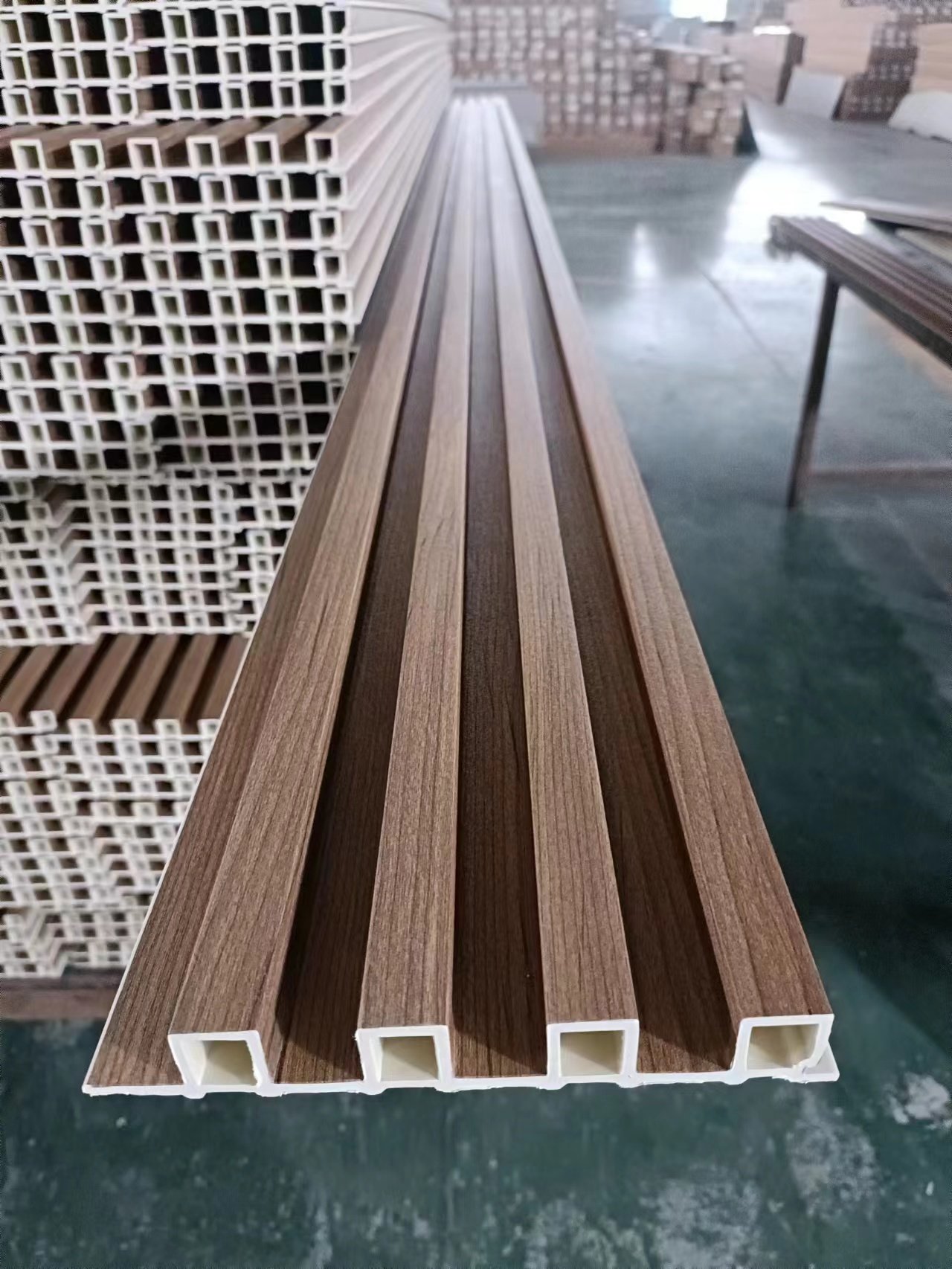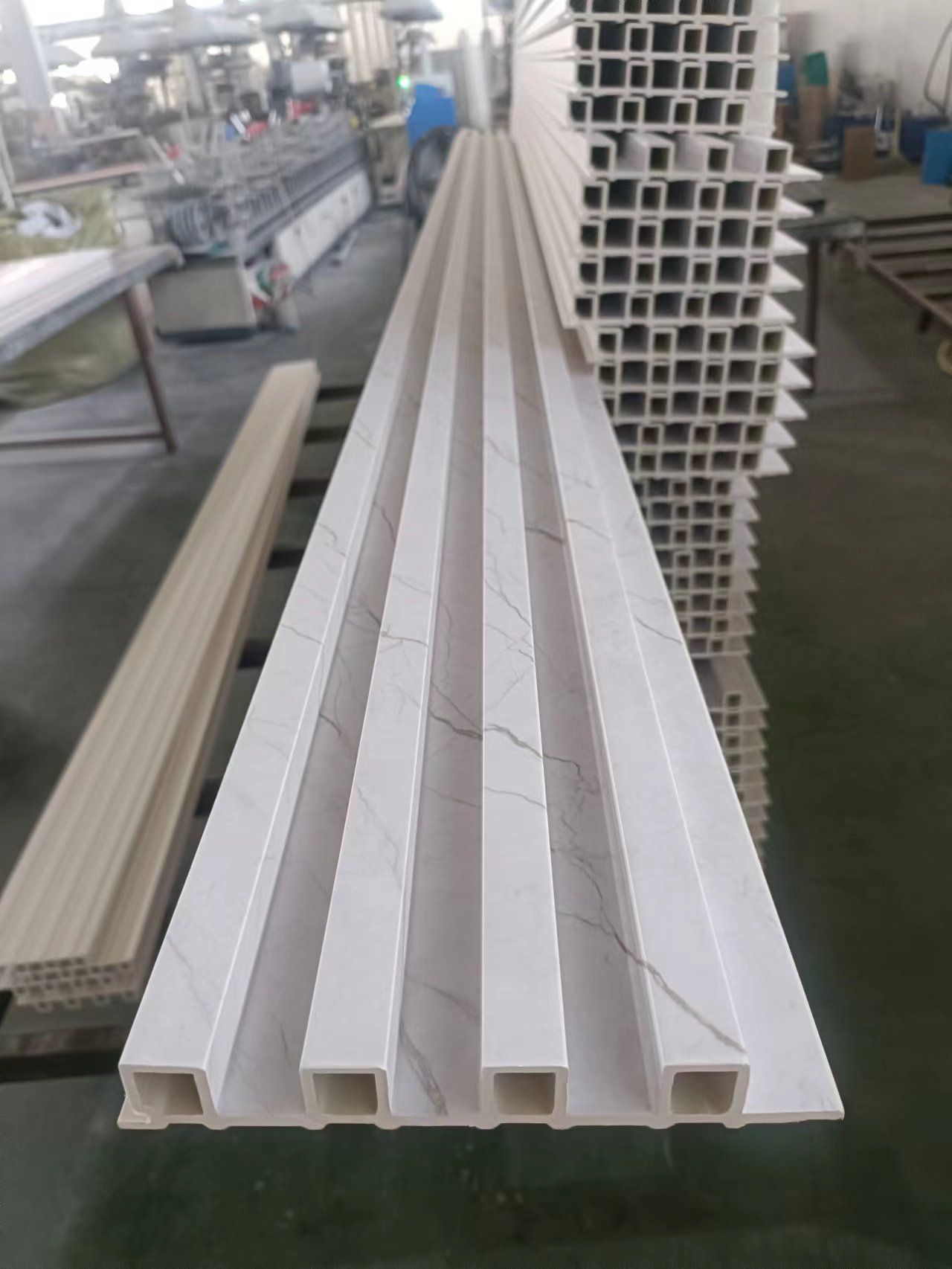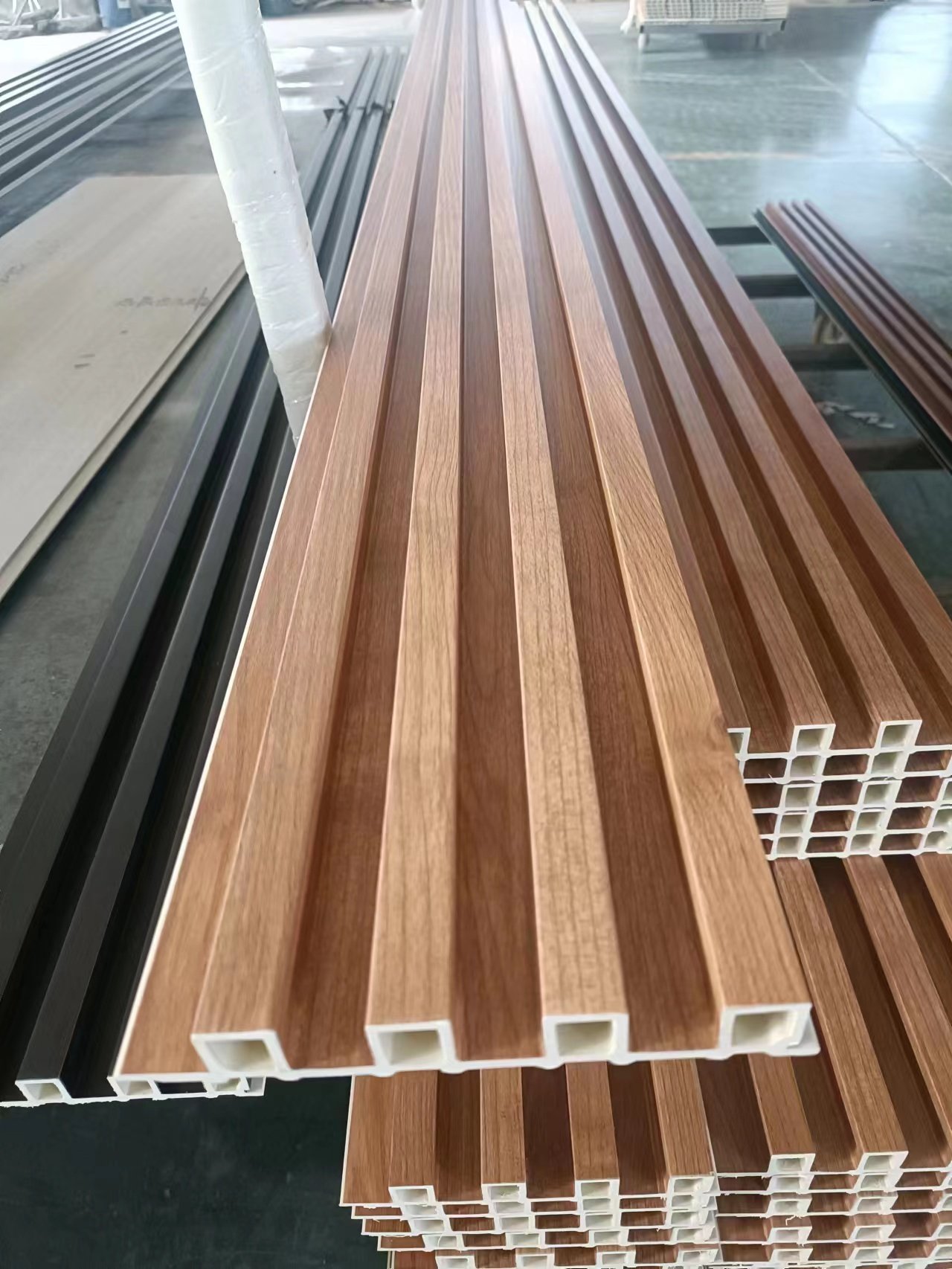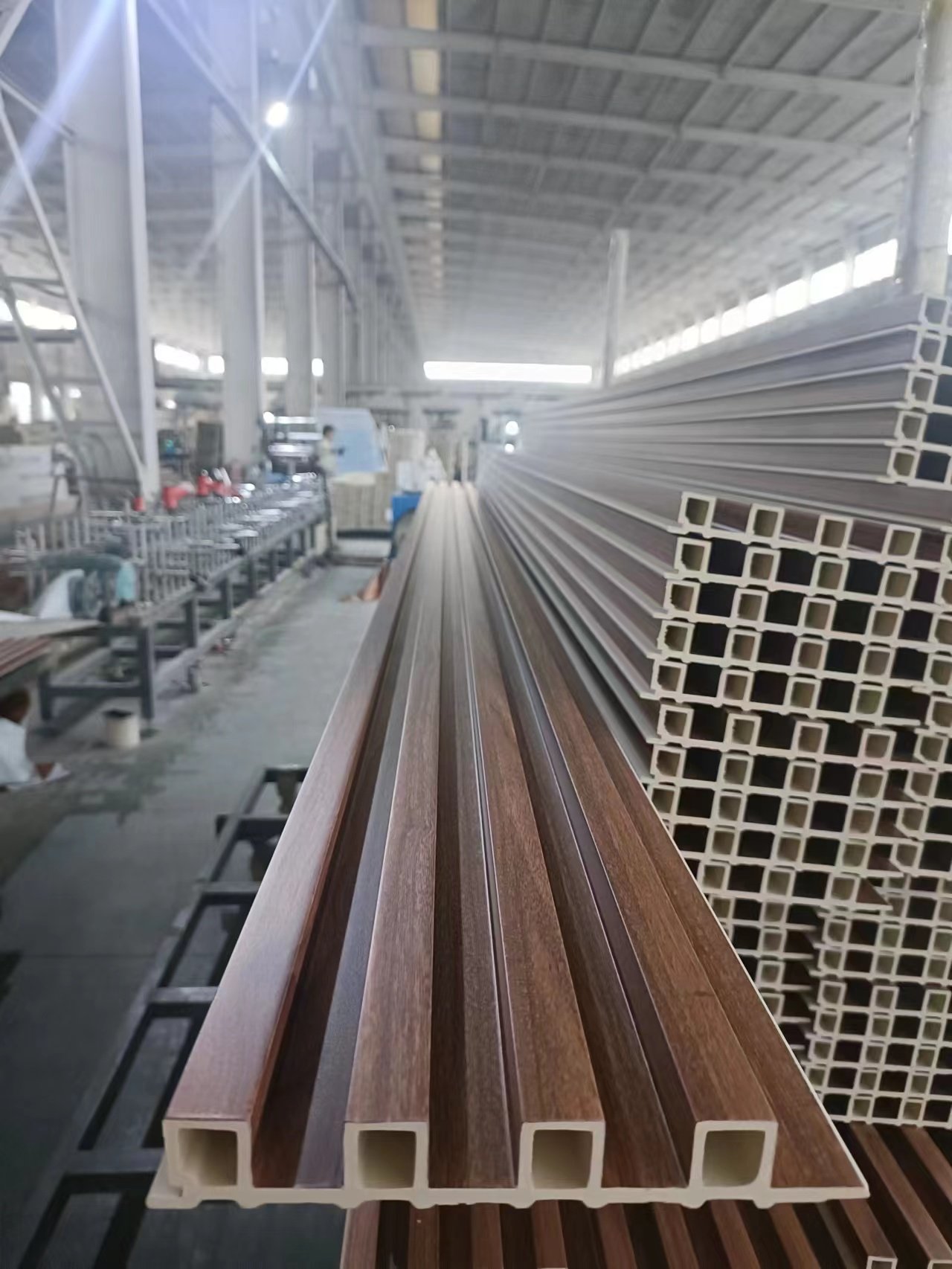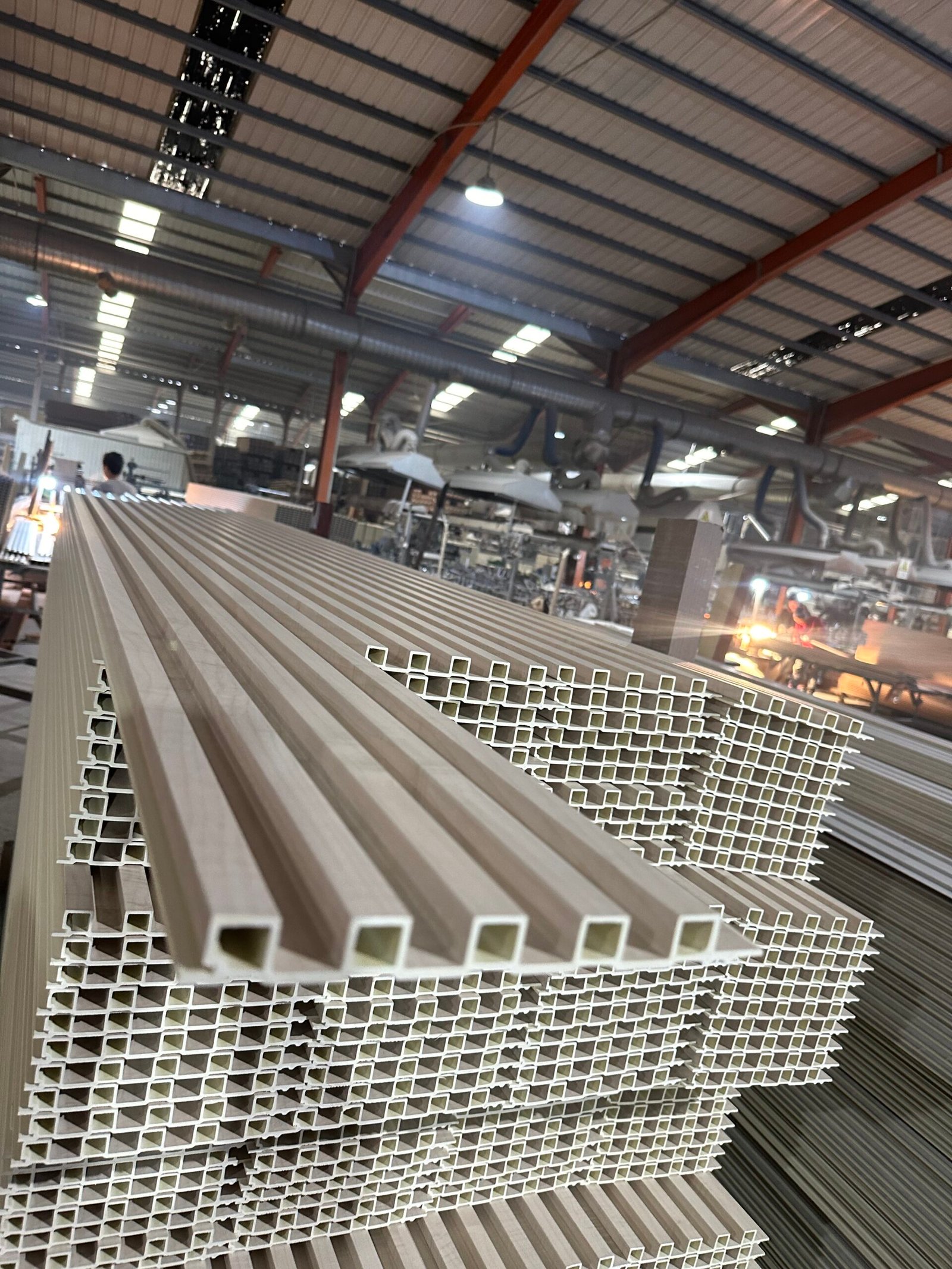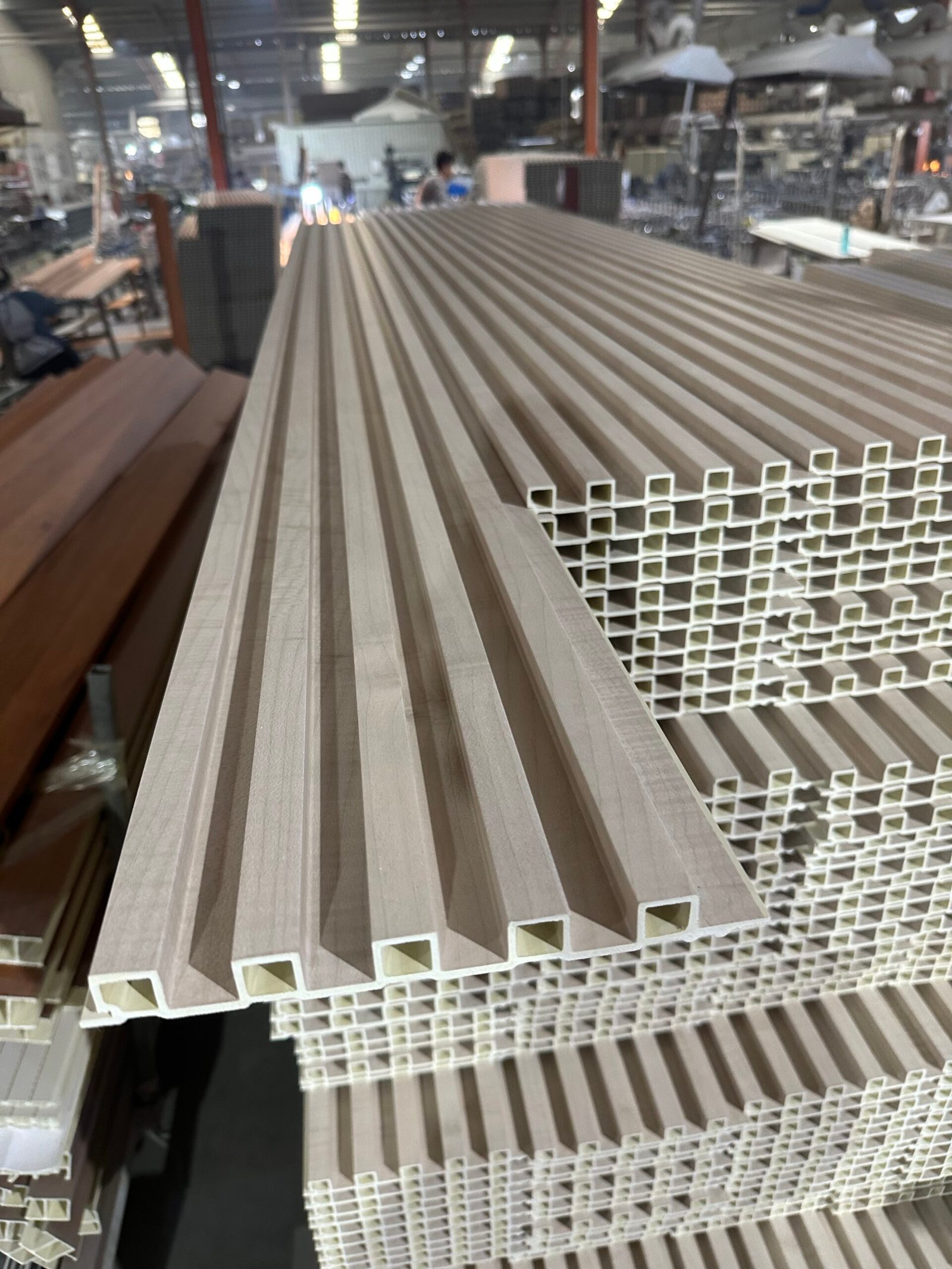WPC Fluted Panel
What Are the Disadvantages of WPC Fluted Panels?
Wood-Plastic Composite panels are well-regarded for their aesthetics and resilience, but they’re not perfect. One drawback is the initial material cost, which tends to be higher than traditional wall finishes like MDF, gypsum board, or basic PVC. Additionally, in regions with extreme temperature fluctuations or direct sunlight exposure, poorly manufactured panels may expand or slightly discolor over time.
However, when sourcing from reliable suppliers who use UV-resistant coatings and stable core formulations, these concerns can be minimized. It’s also worth noting that WPC products are heavier than standard plastic panels, so professional installation is often recommended to ensure alignment and long-term performance.
Which Is Better: PVC Fluted Panel or WPC?
It depends on your project’s goals. PVC fluted panels are lightweight, easy to install, and cost-effective, making them suitable for interior spaces with low moisture and low impact. They’re commonly used in quick renovation jobs or residential applications where budget is a key concern.
On the other hand, WPC-based panels are stronger and more rigid, with better resistance to wear and moisture. The surface texture often mimics real wood grain, giving a premium feel without the drawbacks of solid timber. For commercial interiors, hospitality environments, or outdoor walls, WPC offers better long-term value despite the higher upfront investment.
Is WPC Fluted Panel Waterproof?
Yes, one of the standout benefits of this composite material is its excellent waterproof performance. Since the material blends thermoplastics with wood fibers, the resulting structure is non-porous, meaning it won’t absorb water like traditional timber or MDF. This makes it especially useful in places exposed to humidity—like kitchens, bathrooms, balconies, and semi-exterior wall claddings.
In addition to resisting water, these panels also perform well against mold, mildew, and insects, which are common problems in wood-based materials. As a result, many builders and interior designers prefer using them in long-term construction projects where low maintenance is essential.
Is WPC Stronger Than Wood?
In many ways, yes. While solid wood is strong, it’s also prone to cracking, warping, and termite infestation—especially in unstable environments. WPC panels are engineered to avoid these problems. They offer more dimensional stability, better load resistance in vertical applications, and generally longer lifespans with less maintenance.
That’s why many B2B buyers, such as builders, architects, and importers, now consider WPC products a reliable alternative to hardwood panels, especially in projects where long-term durability and moisture protection are priorities. With the right finish and design, they also meet high aesthetic standards, making them both functional and visually appealing.

